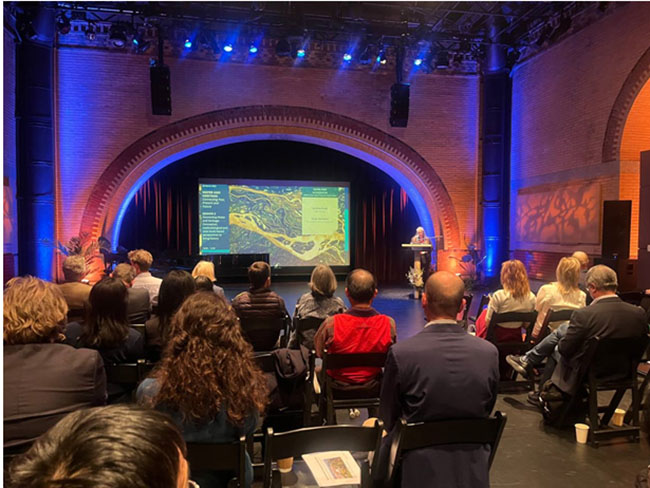LINKAGE BETWEEN WATER, CULTURE AND HERITAGE DISCUSSED IN NEW YORK
Just before the UN Water Conference, on March 20-21, 2023, the International Council on Monuments and Sites (ICOMOS) and partners organized in New York the two-day side event “Water and Heritage: Connecting Past, Present and Future”. The goal was to demonstrate that commitments for action should always be rooted in the past as it holds the value of water-related material, conceptual and spiritual 'assets' built up over millennia.
The participants discussed conceptual and scientific approaches to valuing water and heritage, as well as the role of culture in the past, present and future of sustainable water systems. Examples of ‘live’ heritage were cited from different regions and geographical backgrounds.

D.R. Ziganshina, Director of SIC ICWC, spoke about the unique cultural, technical and scientific water heritage in Central Asia. The particular treatment of water is embedded in religion and traditions of the people inhabiting this arid region since immemorial times. In the Middle Ages, the Silk Road, housing Central Asia in its heart, played an important role in developing water infrastructure since most of its routes crossed dry steppes. The people built ‘sardoba’, covered storage tanks to collect rainwater during rainy periods and meltwater in winter. Besides expanding trade links and water infrastructure, development of the Silk Road also fostered international communication and dialogue, as well as scientific exchanges.
Another example of the region's heritage is the development of the Golodnaya (Hunger) Steppe. The technical, managerial and socio-economic approaches applied to development of this Steppe are an example of integrated land development, i.e. entire settlements and cities were built around the irrigation system. Establishment of the Central Asian Irrigation Research Institute (SANIIRI) in 1924 provided a scientific basis for modernization and implementation of innovative approaches to land development. The nationwide construction of the Big Fergana Canal, where 160 thousand people dug a 350-km canal for 45 days by the local khashar method (voluntary unpaid labor), is also indicative.
Undoubtedly, when citing the positive examples of water development, one should not forget about tragic lessons such as the Aral Sea disaster. The future is built on both positive and negative lessons of regional heritage. The regional water heritage is described in details in the publication “Water: Past, Present and Future”, V.A. Dukhovniy and J. de Schutter.
The first day of the event was closed by the world premiere of the Water and Heritage themed chamber music, composed by Evan Fein and performed by the UN Chamber Music Society.
See more details on: www.icomos.org/en/focus/un-sustainable-development-goals/122372-icomos-at-un-water-conference-2023
|